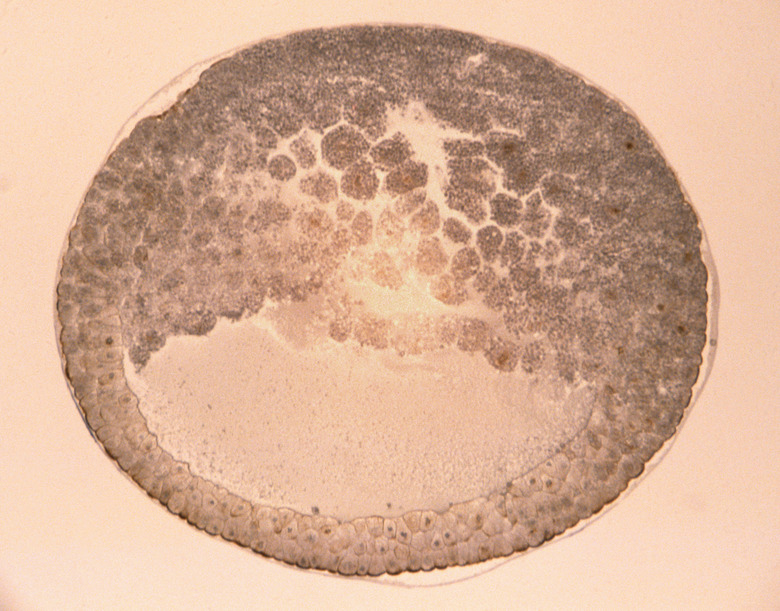At Which Stage Of Life Does Mitosis Occur More Rapidly?
Every living organism is made up of cells, which need to constantly grow, repair and reproduce to sustain life. The human body consists of trillions of cells, which provide structure, absorb nutrients from food and convert them into energy, and fulfill many important roles. Depending on the type of cell, it may reproduce by mitosis or meiosis.
TL;DR (Too Long; Didn't Read)
**TL;DR (Too Long; Didn't Read)**
The most rapid rate of mitosis occurs during periods of growth, such as during the zygote, embryo and infant stages in humans and after periods of inactivity in plants.
Mitosis Versus Meiosis
Mitosis Versus Meiosis
Two types of cell division are mitosis and meiosis. In meiosis, a cell splits to form new cells with half the number of chromosomes of the original cell, and produce gametes for sexual reproduction. In mitosis, a cell splits to form two daughter cells, which are genetically identical to each other and to the original parent cell. Mitosis produces diploid cells, each with 46 chromosomes, while meiosis produces haploid cells, each with 23 chromosomes. This is the main factor that differentiates mitosis versus meiosis.
How Mitosis Works
How Mitosis Works
Mitosis allows the same cell functions and process (primarily growth and replacement) to continue because it produces daughter cells identical to the parent cell. Mitosis is a continuous process that takes place over five phases: interphase, prophase, metaphase, anaphase and telophase.
During interphase, the cell replicates its DNA and prepares for cell division. The chromosomes (DNA molecules) form pairs during prophase and the nuclear membrane starts to break down. In metaphase, the nuclear membrane has completely disappeared, the paired chromosomes form a line and cylindrical cellular organelles called centrioles release spindle fibers. The centrioles pull the spindle fibers back during anaphase, making the chromosomes separate to opposite sides. During telophase, a nuclear membrane forms around each set of separated chromosomes.
When Mitosis Occurs Most Rapidly
When Mitosis Occurs Most Rapidly
Mitosis occurs whenever more cells are needed. It happens throughout the entire lifespan of a living organism (human, animal or plant) but most rapidly during periods of growth. This means, in humans, the fastest rate of mitosis happens in the zygote, embryo and infant stage.
A high rate of mitosis is required to grow and repair tissue, such as in human lymph nodes and bone marrow. Mitosis happens at a faster rate in some areas of the body than in others, such as the dermis of the skin (because the epidermis loses skin cells daily) and areas of tissue damage caused by wounds and broken bones.
In plants mitosis happens most rapidly during periods of growth, for example when they come out of periods of inactivity, such as during germination and springtime bud formation. The areas of plants where mitosis happens most rapidly are the stems, side branches and root tips.
Cite This Article
MLA
Gillespie, Claire. "At Which Stage Of Life Does Mitosis Occur More Rapidly?" sciencing.com, https://www.sciencing.com/stage-life-mitosis-occur-rapidly-17281/. 19 August 2018.
APA
Gillespie, Claire. (2018, August 19). At Which Stage Of Life Does Mitosis Occur More Rapidly?. sciencing.com. Retrieved from https://www.sciencing.com/stage-life-mitosis-occur-rapidly-17281/
Chicago
Gillespie, Claire. At Which Stage Of Life Does Mitosis Occur More Rapidly? last modified March 24, 2022. https://www.sciencing.com/stage-life-mitosis-occur-rapidly-17281/
